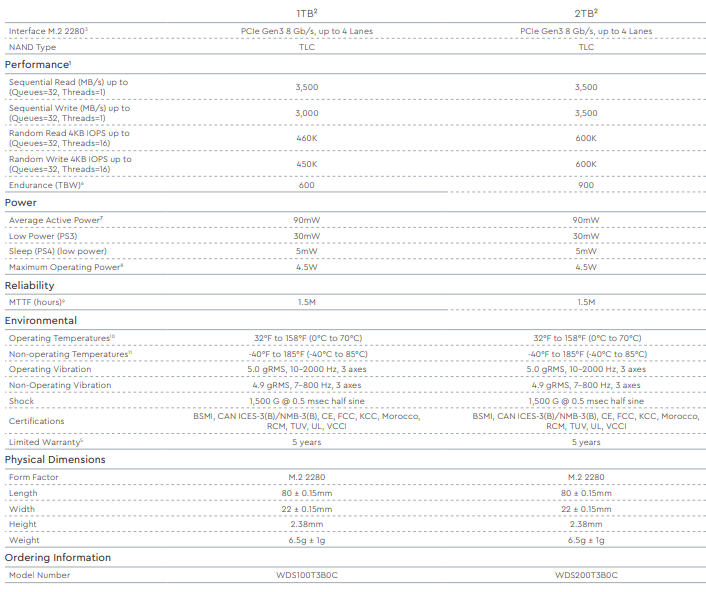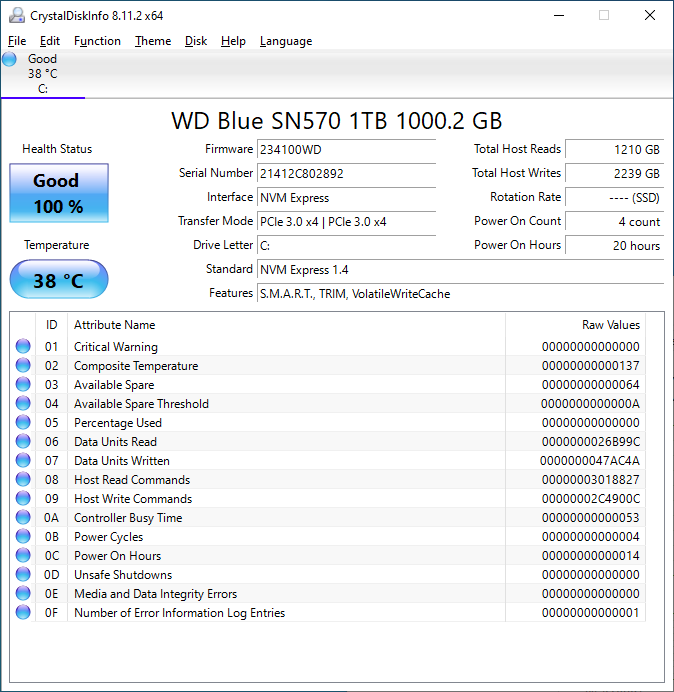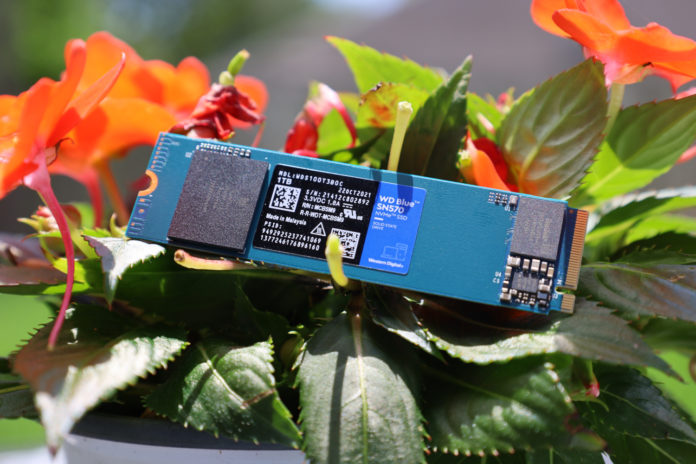Today we are taking a look at the WD Blue SN570 1TB NVMe SSD. The Blue line of SSDs is WD’s mainstream offering, standing above the value Greens and below the enthusiast Black line. The previous WD Blue SN550 has long stood as a standard-bearer for an inexpensive entrant into the NVMe market that separates itself cleanly from SATA predecessors, and I have high hopes going into looking at this updated drive. With that said, I was not particularly impressed with the WD Black SN750 SE so hopefully the SN570 is more impressive.
WD Blue SN570 1TB NVMe SSD
The WD Blue SN570 1TB comes in a single-sided M.2 2280 (80mm) form factor.

The WD Blue SN570 PCB layout is similar to both the Blue SN550 and the SN750 SE. Like the SN550 and SN750 SE, this new drive is DRAM-less. Paired with the custom WD controller is a single NAND package. This NAND package is Toshiba (now Kioixia?) BiCS5 112-layer TLC NAND, which is not something we have looked at yet.

The rear side of the drive has nothing except some silkscreened logos and regulatory markings.
WD Blue SN570 SSD Specs
The WD Blue SN570 line of SSDs is available in sizes between 250GB and 2TB.
Our review model is the 1TB, which lands right in the middle of the product stack. Rated sequential performance is good for a PCIe 3.0 drive at 3500 MB/s read and 3000 MB/s write. Interestingly, this is just below the read rating on the SN750 SE and just above that drive on the writes, despite the SN750 SE nominally being a PCIe 4.0 drive. Regardless of that, these are much improved specs over the previous SN550 drive, and are much more in line with a high-end PCIe 3.0 drive rather than a value-segment drive.

Endurance on the entire WD Blue SN570 line is 600 TBW, which is identical to the previous drives. 500-600TBW is my line for what is acceptable endurance on a 1TB drive, so the SN570 gets a passing grade here.
Lastly, the warranty is listed at 5 years which is always nice to see on a drive.

CrystalDiskInfo can give us some basic information about the SSD and confirms we are operating at PCIe 3.0 x4 speeds using NVMe 1.4.
Test System Configuration
We are using the following configuration for this test:
- Motherboard: ASUS PRIME X570-P
- CPU: AMD Ryzen 9 5900X (12C/24T)
- RAM: 2x 16GB DDR4-3200 UDIMMs
Our testing uses the WD Blue SN570 1TB as the boot drive for the system, installed in the M.2_1 slot on the motherboard. The drive is filled to 85% capacity with data and then some is deleted, leaving around 60% used space on the volume.
Next, we are going to get into our performance testing.




This is really interesting, it’s great to see the capacities slowly creeping up. I’d also love to see some reviews of larger capacity SSDs, as replacing magnetic drives with SSDs seems to bring a lot of benefits that are worth the extra expense – lower power consumption, lower failure rate, higher performance even in cheaper SSDs, etc. But there don’t seem to be very many slower, cheaper, larger capacity SSDs on the market even though you’d think the technology would be there by now.
I think the issue there is a) if you don’t need speed and have the space, HDD is still cheaper, and b) if you do, they can charge a premium.
As for the performance issues, I wonder if it’s going into sleep mode between benchmark cycles? Or conversely hasn’t finished recovering turning SLC-cached writes into TLC.